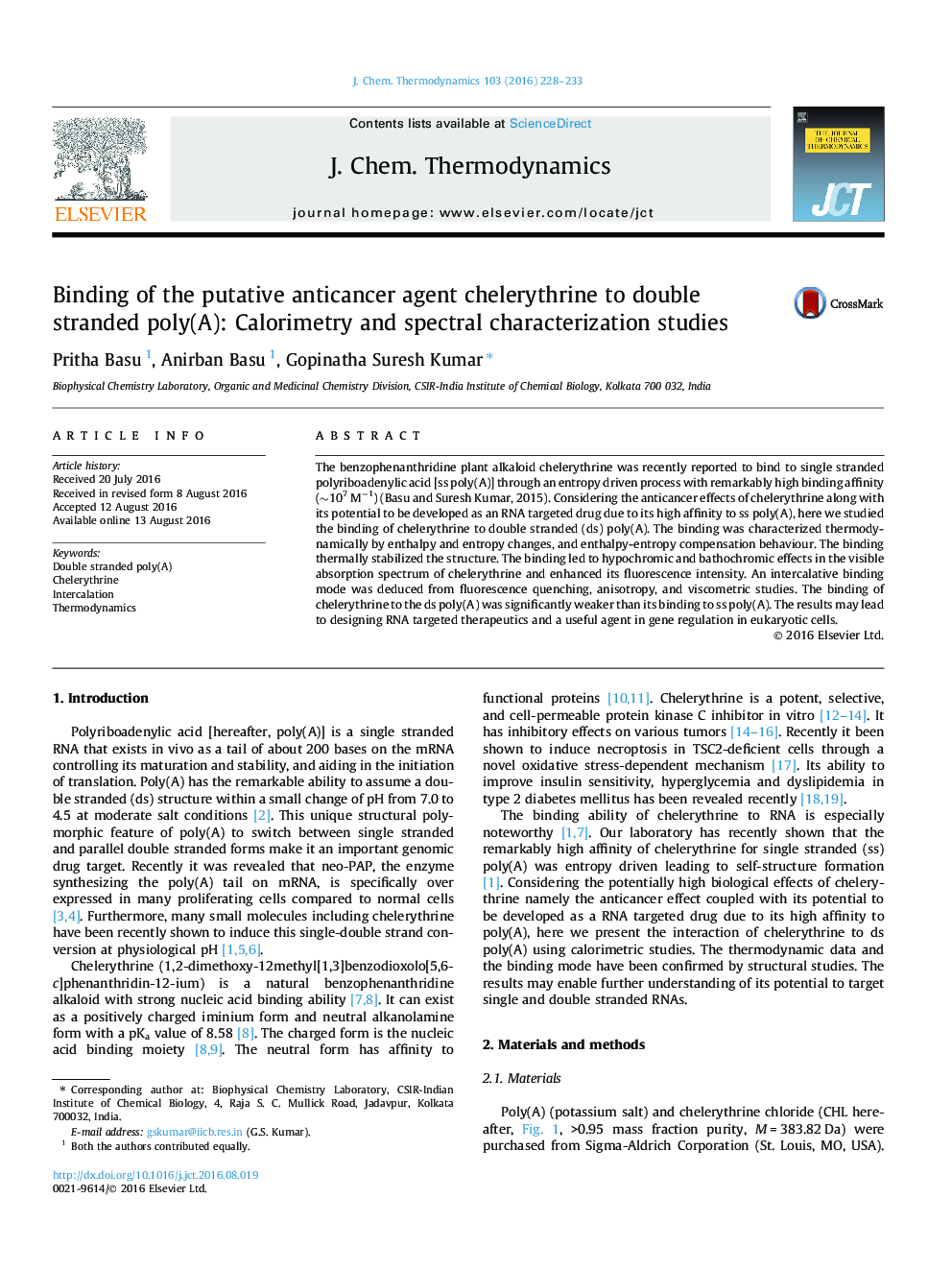| Article ID | Journal | Published Year | Pages | File Type |
|---|---|---|---|---|
| 6476949 | The Journal of Chemical Thermodynamics | 2016 | 6 Pages |
â¢The binding of chelerythrine to double stranded poly(A) has been studied.â¢The binding was favoured by both positive entropy and negative enthalpy.â¢Enthalpy-entropy compensation was observed.â¢The binding mode was found to be intercalative.
The benzophenanthridine plant alkaloid chelerythrine was recently reported to bind to single stranded polyriboadenylic acid [ss poly(A)] through an entropy driven process with remarkably high binding affinity (â¼107Â Mâ1) (Basu and Suresh Kumar, 2015). Considering the anticancer effects of chelerythrine along with its potential to be developed as an RNA targeted drug due to its high affinity to ss poly(A), here we studied the binding of chelerythrine to double stranded (ds) poly(A). The binding was characterized thermodynamically by enthalpy and entropy changes, and enthalpy-entropy compensation behaviour. The binding thermally stabilized the structure. The binding led to hypochromic and bathochromic effects in the visible absorption spectrum of chelerythrine and enhanced its fluorescence intensity. An intercalative binding mode was deduced from fluorescence quenching, anisotropy, and viscometric studies. The binding of chelerythrine to the ds poly(A) was significantly weaker than its binding to ss poly(A). The results may lead to designing RNA targeted therapeutics and a useful agent in gene regulation in eukaryotic cells.
Graphical abstractDownload high-res image (172KB)Download full-size image
